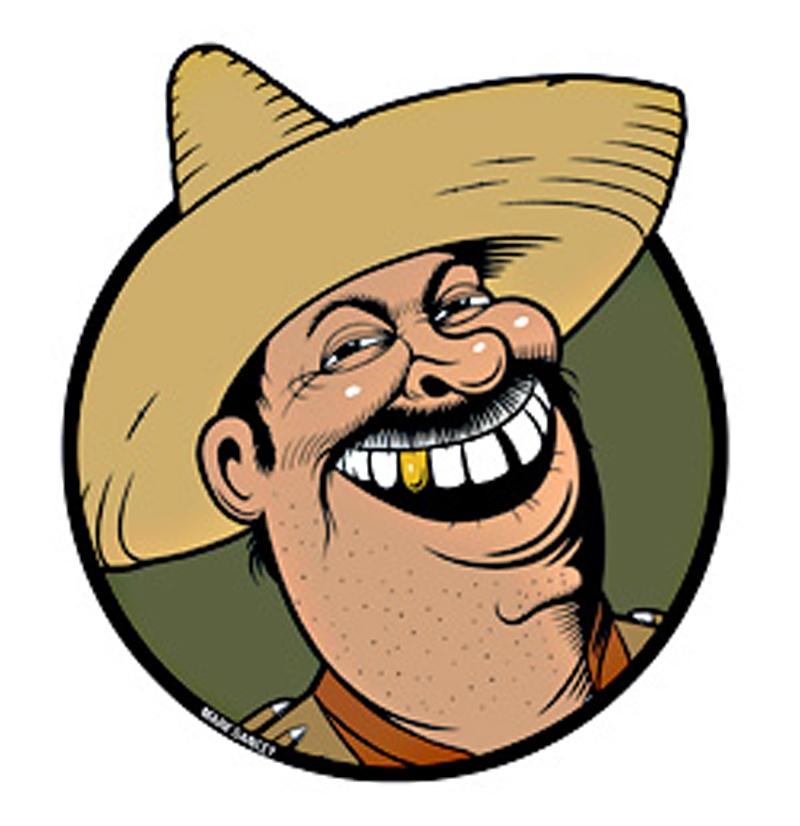Dear Mexican,
Why is it que cada vez that I talk to a Hispanic (not many Mexicans in New York, yet), it seems that they have a fantasma that they think lives in their house? I know that Carlos Mencia has used this in his material, but I wonder if la raza is more liable to be haunted than other ethnic groups. Also, why does the chupacabra only live in Hispanic areas (including the South Bronx) but never in rural Mississippi?
Spooked in Soho
Dear Gabacho,
This column is ¡Ask a Mexican!, not ¡Ask a Hispanic!, but I’m making a exception for you because doing so allows me to dispel a long-held myth: The chupacabra isn’t Mexican. The fantastical creature that preys on livestock (hence its Spanish name, which translates as “goatsucker”) has obsessed fortean minds and popular culture in the Americas for the past 15 years. Its first claimed sighting was in 1995 in Puerto Rico, and other witnesses across Latin America (including the American Southwest and Florida) have also have reported seeing the creature. All cultures keep bloodsuckers as bogeymen—witness America’s current fascination with Twilight and True Blood, or how Know-Nothings castigate Mexis as perpetual leeches. But as Benjamin Radford reported in his well-researched, well-written Tracking the Chupacabra: The Vampire Beast in Fact, Fiction and Folklore, folklorists have long considered Latin American culture a fountain of mysticism and tall tales, legends usually created as socio-Jungian explanations of life. The chupacabra, according to this school of pensamiento and a folkorist Radford cites with a bit of skepticism, is “a form of cultural resistance which many [Latinos] use to maintain social bonds and gain control over growing fears surrounding the perceived destructive effects of ‘toxic’ U.S. political and economic imperialism.” Typical—when in doubt, blame the problems of Latinos on gabachos, the true Nosferatus.
A couple of weeks ago, to the horror of friends and family, my wife and I walked across the bridge from El Paso into Mexico for a day of wandering the mercados of Juárez in search of Salsa de la Viuda and Bohemia Obscura. A quick Internet search suggests that there were over 3,000 murders in Juárez in 2010. Our friends said we were crazy. We are both very comfortable mixing with Latinos in general. My wife is a “Spanish” person from northern New Mexico (call her a “Mexican” at your peril). Our view was that the drug lords are killing one another and are not much interested in a couple of day tourists in broad daylight in the tourist zone of Juárez. The fact that we saw only three other obvious gabacho tourists over the course of the day shows that U.S. tourists are terrified of Juárez. Most of the tourist mercados were closed (we were the only shoppers there). Most of the usual border liquor stores were boarded up, and those that were open had scant inventory. The mercados favored by the locals, on the other hand, were buzzing. So were we crazy to go? We had a great day even though we didn’t find the beer or salsa.
Viviendo la Vida Loca
Dear Gabacho,
Your logic is the same as an American tourist walking through Baghdad during the height of the insurgency. While your reasoning is fine—narcos usually shoot for their enemies or Mexican-Americans returning to the rancho, and lay off gunning at gabachos lest the U.S. Army pull another Punitive Expedition—they’re rather trigger-happy at the moment. Besides, why visit Juárez when you have El Paso—statistically and seemingly contradictorily one of the safest big cities in the United States—right across the border? They have everything Juárez has, plus Chico’s Tacos: purveyors of the double-order of rolled tacos, baptized in a flurry of cheddar cheese and tomato sauce, as close to a Mexican god since the days of Quetzalcoatl.
GOOD MEXICAN OF THE WEEK! Another Chuco landmark—Cinco Puntos Press, purveyors of fine Mexican-American books, and a friend to the Mexican. Their catalogue is at cincopuntos.com.







